Lumin T3 Network Player Review
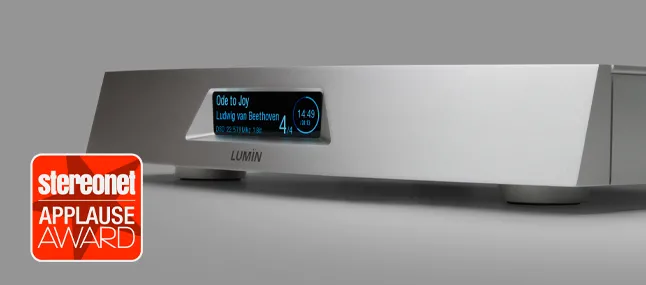
Mark Gusew samples the latest incarnation of this popular network music player…
LUMIN
T3 Network Player
£4,195
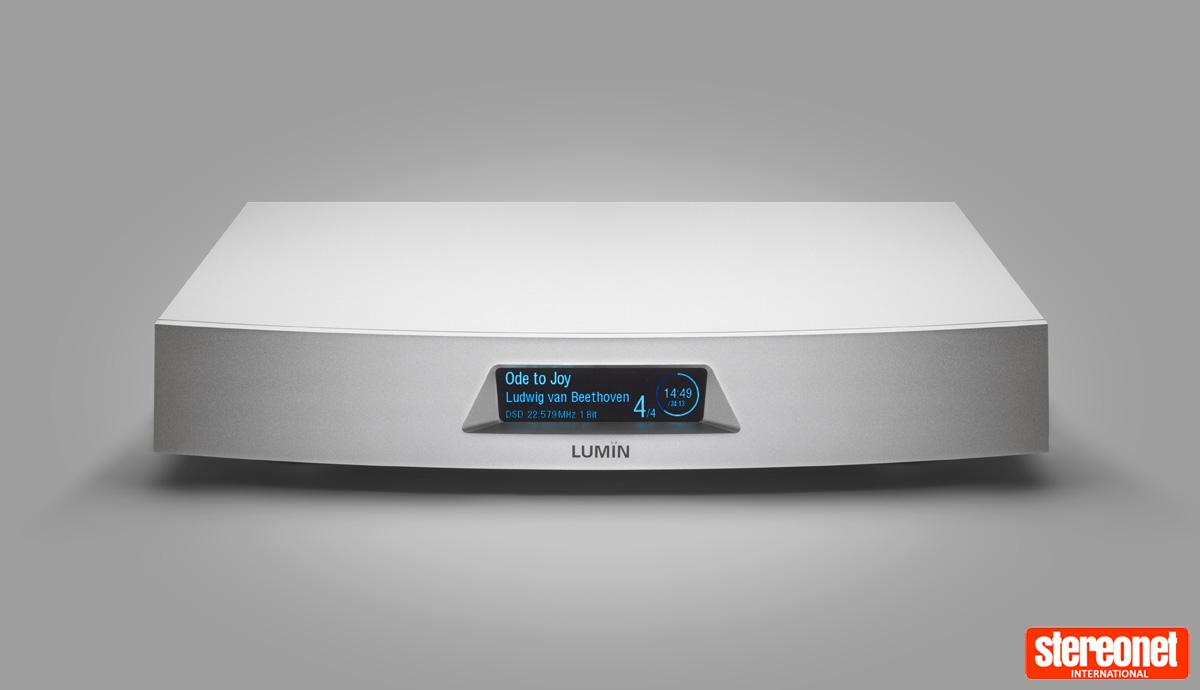
Pixel Magic Systems, the Hong Kong-based parent company of LUMIN, has a knack for releasing models that are always a bit better than the last one, so I was excited to get my hands on the new T3 network player. Priced at £4,195 – a competitive point for quality music streamers – buyers get an exquisitely built solid aluminium chassis that's CNC routed to its shape. The top cover plate is made from a 6mm sheet, and the back plate 8mm solid aluminium sheet. There are no externally visible screws, and the fit and finish are world-class in their black or silver finishes – especially now that the higher-grade surfacing first seen on the LUMIN P1 has been adopted.
It's more than a pretty face, though. I spoke to Peter Lie, LUMIN's Firmware Lead, also known as 'wklie' in our StereoNET forums, and asked him why a new processor has been fitted to the T3. He told me:
When we adopted this, we got feedback from other reviewers and dealers that the sound quality is improved from the U1 Mini to the U2 Mini (mostly similar, but used the new processor in the T3). So the hardware itself gives an audible improvement, presumably due to the lower noise from the processor and our new design, even when we are sending a bit-perfect signal.
He points out that it also has increased capacity for future updates, too.
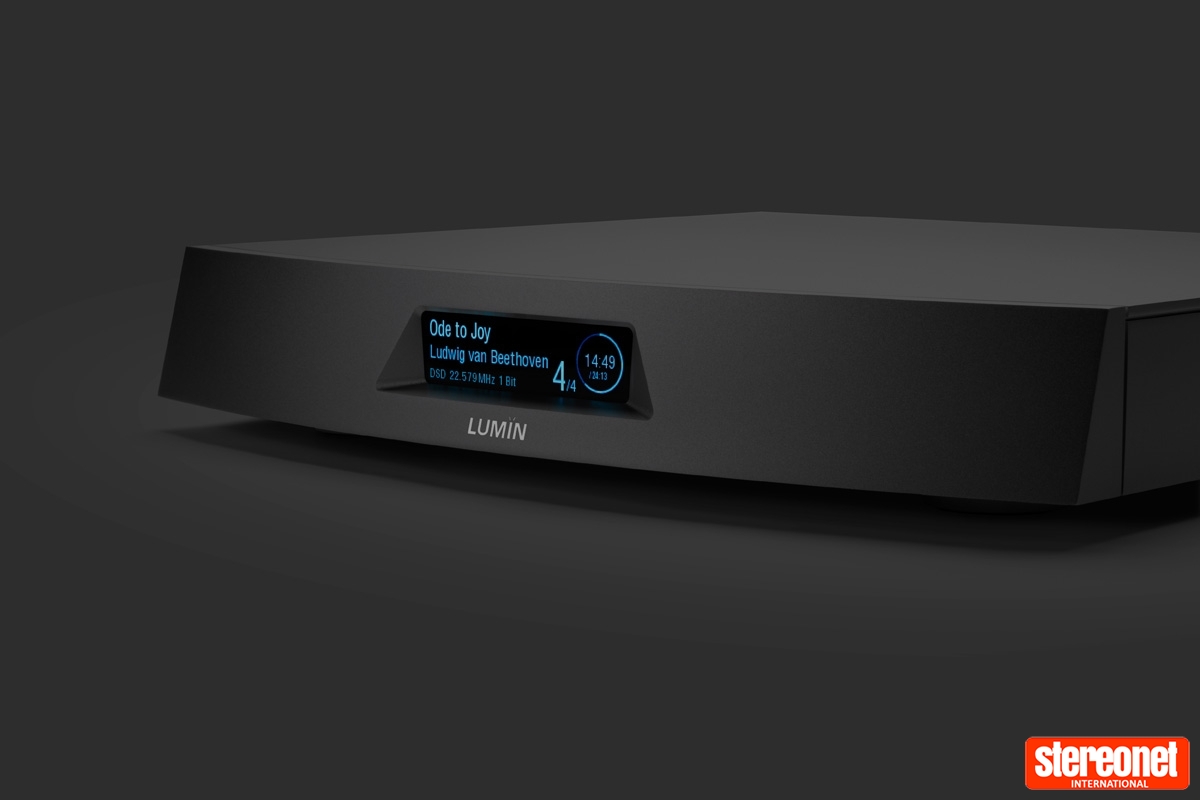
UP CLOSE
The T3 has analogue outputs using the internal DAC and the ability to connect your own via a S/PDIF BNC coaxial connection or via USB; sampling rates up to DSD512 and PCM384 are supported. The design is said to be fully balanced, dual mono throughout. The company has more than nine years of experience working with ESS DAC chips and has continued to use dual ES9028Pro Sabre silicon in the new T3, as per the T2. Peter told me that many manufacturers seem to follow the ESS reference design, using its default configuration, but his company uses a very different hardware design and applies its own ideas and configurable parameters to achieve better sound.
LUMIN uses one of the ESS filters that has a linear phase characteristic for non-MQA playback, and when playing MQA, they naturally conform to MQA filter requirements. Lovers of gapless playback will be pleased to know that it is achieved not only for PCM/DSD tracks but also for MQA gapless playback when using the LUMIN app or TIDAL Connect.
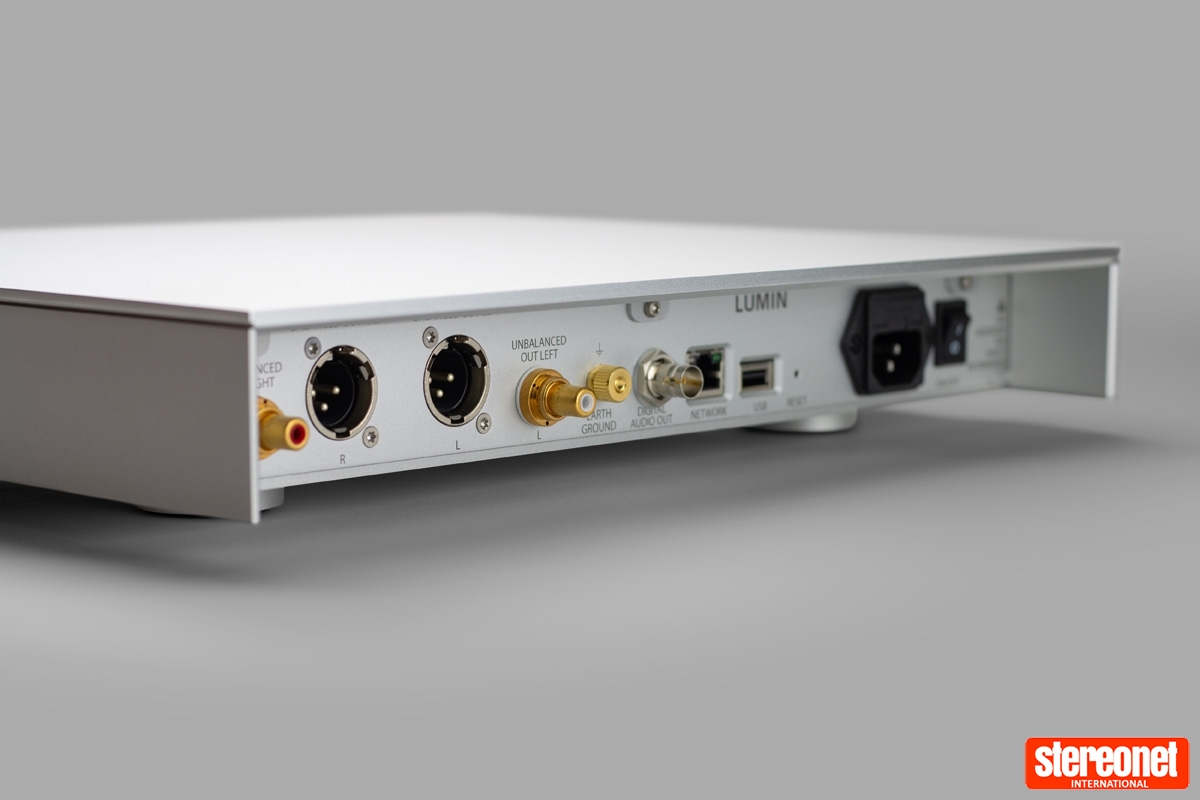
The T3's analogue output stage is derived from the flagship X1 but with some cost reduction, primarily achieved by removing the expensive Lundahl output transformers, which are also present on the P1. Another choice based on cost is the switch-mode power supply rather than a linear type. It's a very low ripple noise design and is complemented by multiple individual regulators and filtration on the main board, including Nichicon MUSE capacitors.
Lastly, LUMIN uses a selectable LEEDH Lossless volume control that works on all the outputs. This allows the T3 to be connected directly to a power amplifier, bypassing a preamp and its additional signal path. Peter explained that when using the analogue output, "LEEDH processing is a LUMIN-enhanced proprietary implementation that takes advantage of our specialised hardware and the way we use the ESS chips." It works for all sources, including the LUMIN app, Tidal app, Spotify app, Roon, AirPlay, etc.
An optional deluxe IR remote control is available (the receiver uses the USB port) and would be a must-have if you were using it for the volume control. Personally, I would love to see a simple remote unit shipped with every LUMIN model with Volume, Play, Stop, Next & Previous track, etc., as using an app for these simple tasks is tiresome.
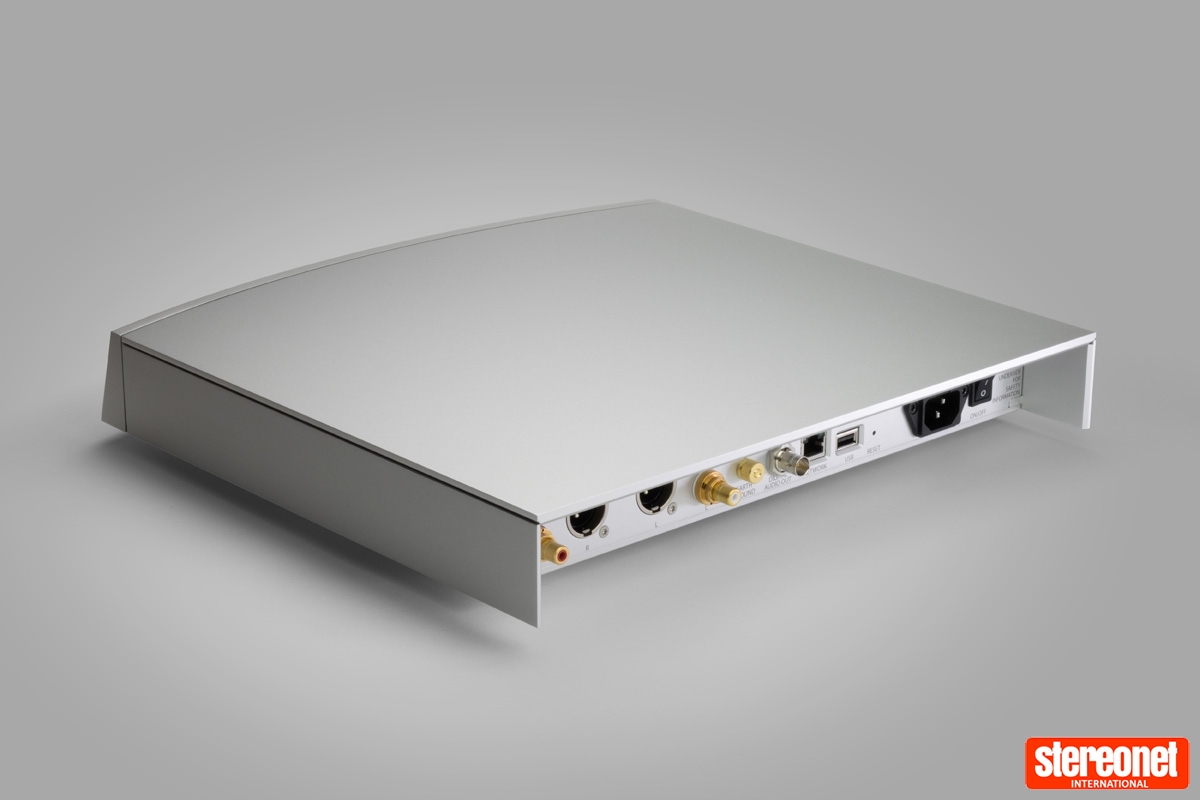
SETUP
I connected the LUMIN T3 via XLR cables to my Cambridge Audio Edge A integrated amplifier and JBL HDI-3800 loudspeakers. Internet access to the T3 is exclusively via Ethernet cable, with Wi-Fi being a no-no on the grounds of reliability and inferior sound quality. Since reviewing the LUMIN P1 some six months or so ago, I have maintained a 30-metre fibre-optic networking connection via Ethernet Media Converters for its superior sound quality, as well as a regular RJ45 Ethernet connection.
LUMIN devices are amongst the easiest to set up and configure in the industry. The company's Music app is required on your control device, either tablet or phone, and is available for both iOS and Android. As soon as the unit was switched on for the first time, a message indicating that a firmware update to v15.1 was requested. This took a couple of minutes, and then let me log in to my TIDAL and Qobuz accounts for easy access; access to Spotify is via the native Spotify Connect app. Happily, the LUMIN T3 (like the P1 and U2 Mini before it) is Roon Ready immediately upon release of this new model, which is quite an achievement.

Both balanced and unbalanced output connections are provided, with the former sounding better as you would expect. Besides streaming, I also used a portable hard drive with hi-res tracks connected to the USB port. I played the unit for about a hundred hours, as recommended by LUMIN for burn-in time, before doing any serious auditioning.
THE LISTENING
LUMIN components tend to have quiet, dark backgrounds with high levels of transparency, detail and neutrality. The T3 shares all those qualities and adds energy and speed to that list. It was immediately apparent from the first track I tried that this is exciting to listen to, and that rhythmic tracks come alive. Although it has been some time since I had its predecessor in my system, although no slouch, it never struck me as a very dynamic-sounding player – unlike this new T3. Nor was it as polished and generally as accomplished sounding. This model is much closer to the P1 in overall sound quality than the price difference would suggest and possibly even more exciting.
Take Kraftwerk's Boing Boom Tschak and Music Non Stop from 3D The Catalogue album, for example. This great German band is known for its tightly syncopated rhythms, and the electronic percussion delivered by the T3 had seemingly boundless energy, with excellent transient speed, vigour and slam. Some may call it analytical, but I prefer to think of it as fast-paced and fastidiously timed, although it was perhaps a touch strident.
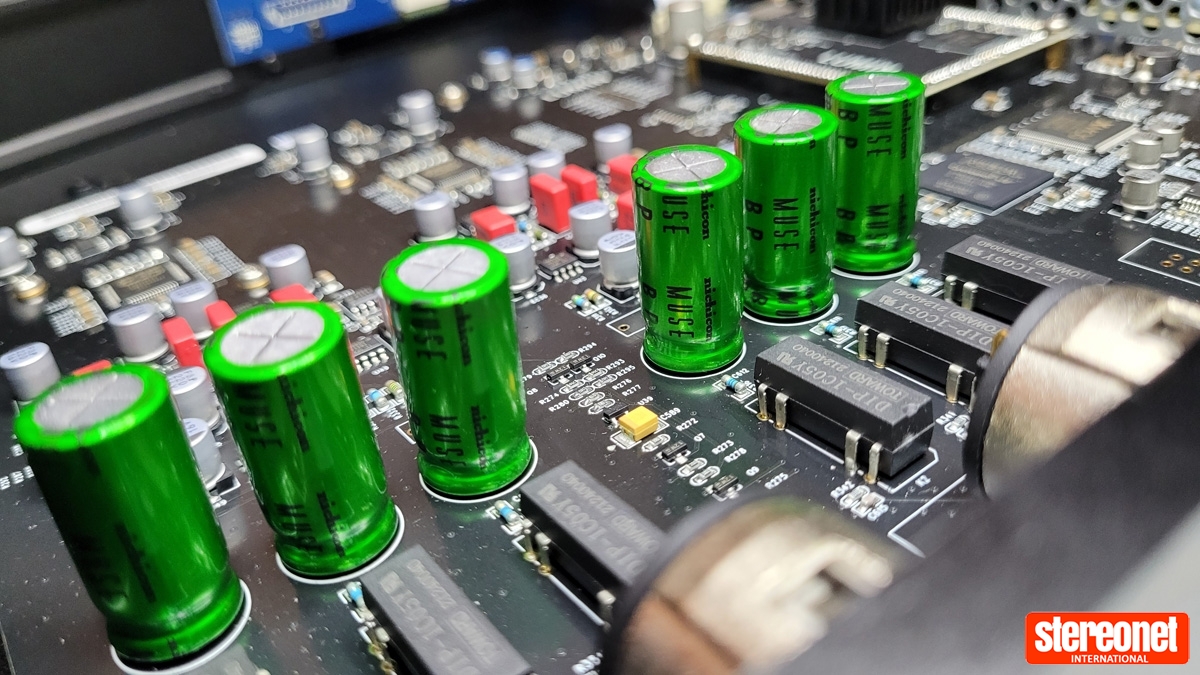
Ruby Baby by Donald Fagen sounded almost like it was playing quicker than usual due to the snap of the drums, bass guitar and piano. It's like the notes are turned on a bit faster and come over precise and with a healthy burst of energy. The same character applied to Babylon Sister by Steely Dan. It must also be said that the T3's pace and attack sound natural and more like the real thing, rather than listening to a tired and dynamically blunted recording. There was cohesion throughout the frequency range, with all the dynamics and speed delivered evenly and harmoniously.
Being the consummate all-rounder that it is, the new T3 also plays classical & acoustic music with care and control. The Violin Concerto for A Minor OP. 7 no. 5 by Theotime Langlois de Swarte was delightful, with a lovely clean string section that maintained the bite of the violins but with no harshness or irritation. The sound proved very well-balanced and smooth and never offended my ears. I enjoyed hearing the timbre of the instruments, along with the subtle inflexions and graduations of the performance.
Tonally, LUMIN has done a great job of allowing the T3 to be neutral and full range. Streaming the 24/96kHz version of Hazey by Glass Animals over Qobuz, I heard strong, deep and very agile bass with no overhang or bloat. It was harmonious with the rest of the frequency range; the midrange and vocals proved smooth and detailed, quite forward and filled out, while the treble was extended and with a touch of sweetness.
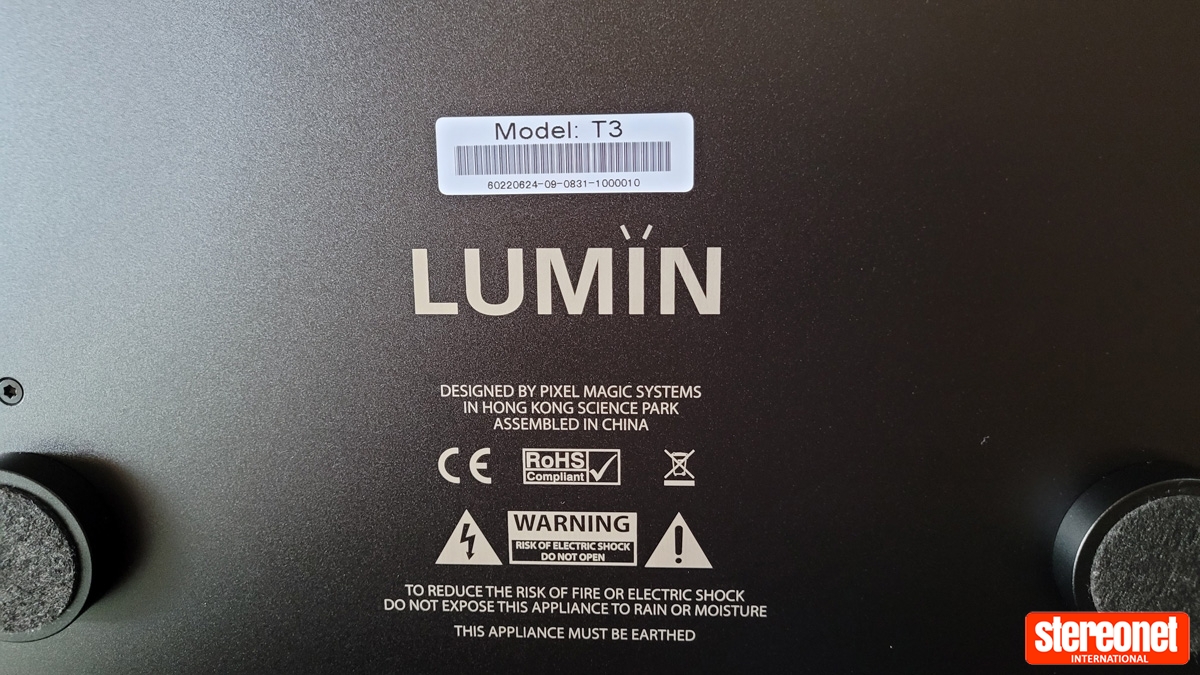
I've often heard some hardness and, at times, analytical unpleasantness from ESS Sabre DAC chip-based equipment. Still, in the T3 – as was also noted in the P1 – both treble and midrange were smooth, clean and colourful without any nasty characteristics. Top marks to LUMIN, then, for integrating these DAC chips into the circuitry so neatly, adding to the overall enjoyment of the player. Chord Left by Agnes Obel is a simple track with a piano being played with lots of sustain and a constant level, with notes decaying away as new notes are played to replace them. This player did a fine job replicating the reverb and decay of the notes, and the sound was transparent enough to hear a harp accompanying the piano.
Listening to Jennifer Warnes's Somewhere, Somebody from a portable hard drive attached to the USB port easily matched or bettered the streamed version – albeit with the energy and speed dialled slightly down. The track was lovely and open sounding with tons of detail, T3 providing a crystal clear window into the recording. Jennifer's voice is the track's highlight and sounded natural and realistic. Oh, and by the way, the LUMIN Music app quickly found my hard drive and folders with fuss-free efficiency.
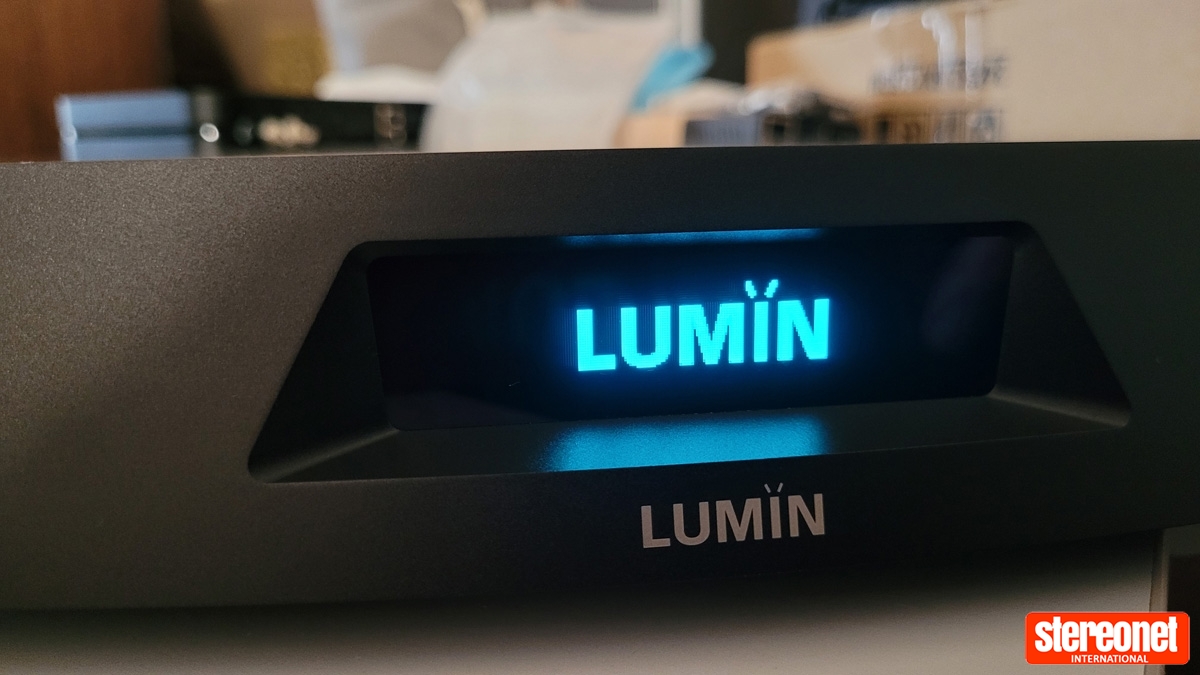
Roon v2.0 operated with its usual slickness and is easier to use in many respects than the LUMIN Music app, especially when searching for new music, as the interface is so intuitive. I compared the sound quality of the same track via Qobuz initiated by Roon vs using the LUMIN app, and although it's very close in most cases, the latter seemed just a touch better. It appeared to have a richer sound with slightly more front-to-back depth – but it was close and not a dealbreaker either way.
The 1971 recording of Guajira by Santana came alive on my system with the opening drum in the left channel placed well outside of the actual loudspeaker, further than I'm normally used to. In the centre was a large hanging image of the piano and vocals, with percussion outside of the right loudspeaker, providing a convincing performance. This player has a very good sense of depth perspective, with seemingly many layers of information, and all the instruments and vocals have an envelope of space around them. It wasn't artificial or bloated in any way.
I feel that the T3 has been sonically optimised to operate as a playback device using the internal DAC. I hooked up my very respectable Holo Spring 3 KTE DAC via a Wireworld Platinum Starlight 7 solid silver USB Cable. I was surprised that there wasn't a larger difference in increased resolution or spatial information over the onboard digital converter. The image was a little wider but not as forward and three-dimensional as using the onboard DAC, and tonally they were very close, so LUMIN has got something very right here. My advice is that anyone that is thinking of immediately mating this machine to an external DAC should be looking at the LUMIN U2 Mini, which is made for that purpose, rather than a T3.
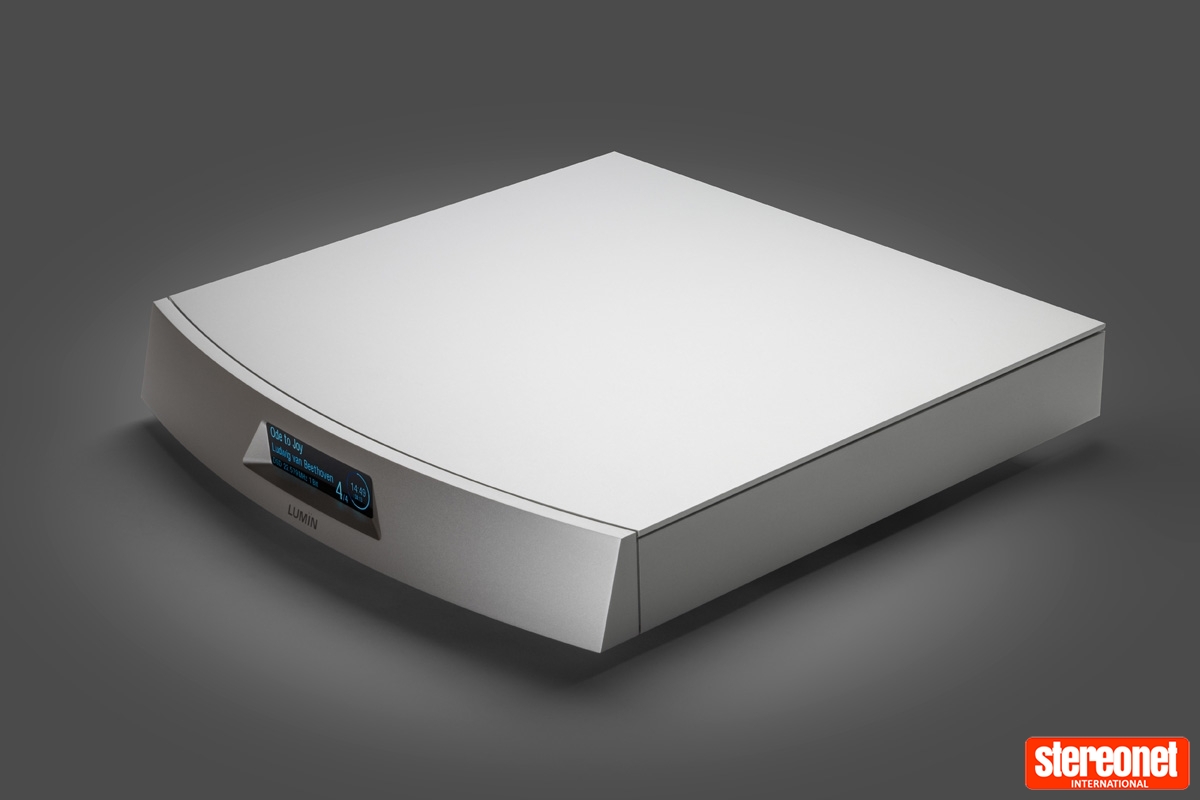
THE VERDICT
 Although the LUMIN T3 has jumped by £300 in price over the T2 that it replaces, in its defence, the company didn't change the price of its predecessor throughout its product life – despite significant inflationary pressure. So now, while keeping all the updates and improvements in mind, this new model still represents good value.
Although the LUMIN T3 has jumped by £300 in price over the T2 that it replaces, in its defence, the company didn't change the price of its predecessor throughout its product life – despite significant inflationary pressure. So now, while keeping all the updates and improvements in mind, this new model still represents good value.
Two things make it stand out from the crowd. First is the excellent sound quality, its dynamics and sheer drive giving life and excitement to music. Secondly, the ongoing software maintenance and support from the factory provide peace of mind and confidence in the purchase being future-proof. The assurance of timely customer assistance and cost-free feature upgrades for many years is a big drawcard because, in my view, a digital device is only as good as its support.
It's more than just an update to the popular T2, then. In reality, the new LUMIN T3 is an ever better sounding device than its predecessor – with skilful improvements that make it one of the finest players at its price point.
For more information visit LUMIN
Mark Gusew
Starting his first audio consultancy business in the early ’80s whilst also working professionally in the electronics industry, Mark now splits his time between professional reviewing and AV consultancy.
Posted in: Applause Awards | 2022 | Sources | Streamers | Hi-Fi
JOIN IN THE DISCUSSION
Want to share your opinion or get advice from other enthusiasts? Then head into the Message
Forums where thousands of other enthusiasts are communicating on a daily basis.
CLICK HERE FOR FREE MEMBERSHIP
Trending
applause awards
Each time StereoNET reviews a product, it is considered for an Applause Award. Winning one marks it out as a design of great quality and distinction – a special product in its class, on the grounds of either performance, value for money, or usually both.
Applause Awards are personally issued by StereoNET’s global Editor-in-Chief, David Price – who has over three decades of experience reviewing hi-fi products at the highest level – after consulting with our senior editorial team. They are not automatically given with all reviews, nor can manufacturers purchase them.
The StereoNET editorial team includes some of the world’s most experienced and respected hi-fi journalists with a vast wealth of knowledge. Some have edited popular English language hi-fi magazines, and others have been senior contributors to famous audio journals stretching back to the late 1970s. And we also employ professional IT and home theatre specialists who work at the cutting edge of today’s technology.
We believe that no other online hi-fi and home cinema resource offers such expert knowledge, so when StereoNET gives an Applause Award, it is a trustworthy hallmark of quality. Receiving such an award is the prerequisite to becoming eligible for our annual Product of the Year awards, awarded only to the finest designs in their respective categories. Buyers of hi-fi, home cinema, and headphones can be sure that a StereoNET Applause Award winner is worthy of your most serious attention.





